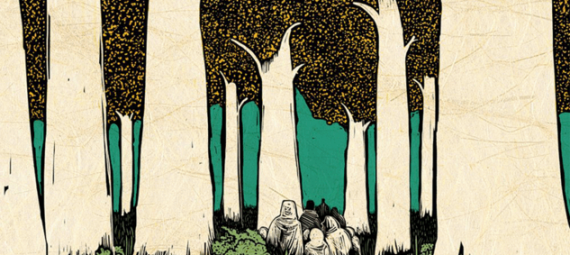If you have been reading my blog for a while or know me well personally, you are aware of my passion for J.R.R. Tolkien and his world of Middle-earth. I wouldn’t consider myself a Tolkien scholar, but definitely a well-researched and passionate fan. To that end, I recently read a book that some may consider rather dry, but I found fascinating…Flora of Middle-Earth: Plants of J.R.R. Tolkien’s Legendarium by Walter S. Judd and Graham A. Judd. Part of the joy of this book is to note that it is a father and son who worked on it together. They enjoyed reading The Hobbit, The Lord of the Rings, and The Silmarillion together, which led to this book later in life.
“We share a love of the sub-created world of J.R.R. Tolkien’s Middle-earth, although otherwise our interests are quite different. One of us (Graham) is an artist, specializing in printmaking, while the other (Walter) is a biological scientist, specializing in botany and plant schematics. This book is thus interdisciplinary, and in it we have joined forces to introduce the reader to the plants of Tolkien’s legendarium”
Ever wanted to know more about Athelas, Mallor-Trees, or the White Trees of Gondor? Or why Middle-earth also had such common plants as potatoes, roses, and willows? This book delves into the real and unique plants, relates the unique plants to real world plants, and discusses the significance of each plant in the world. You can read in-depth about the etymology, ecology, economics, and description of each plant. Each has a beautiful woodcut depicting the plant.
The cover flaps cover the book well.
Few settings in literature are as widely known or celebrated as J.R.R. Tolkien’s Middle-Earth. The natural landscape plays a major role in nearly all of Tolkien’s major works, and readers have come to view the geography of this fictional universe as integral to understanding and enjoying Tolkien’s works. And in laying out this continent, Tolkien paid special attention to its plant life; in total, over 160 plants are explicitly mentioned and described as a part of Middle-Earth. Nearly all of these plants are real species, and many of the fictional plants are based on scientifically grounded botanic principles.
In Flora of Middle Earth: Plants of Tolkien’s Legendarium, botanist Walter Judd gives a detailed species account of every plant found in Tolkien’s universe, complete with the etymology of the plant’s name, a discussion of its significance within Tolkien’s work, a description of the plant’s distribution and ecology, and an original hand-drawn illustration by artist Graham Judd in the style of a woodcut print. Among the over three-thousand vascular plants Tolkien would have seen in the British Isles, the authors show why Tolkien may have selected certain plants for inclusion in his universe over others, in terms of their botanic properties and traditional uses. The clear, comprehensive alphabetical listing of each species, along with the visual identification key of the plant drawings, adds to the reader’s understanding and appreciation of the Tolkien canon.
Even if you are not into botany, this book has a wealth of fascinating info into the world of Middle-earth and the real world plants that influenced it. If you want to add some depth into your Middle-earth games, this book could go a long way to adding those elements.



One thought on “On My Shelf: Flora of Middle-Earth”